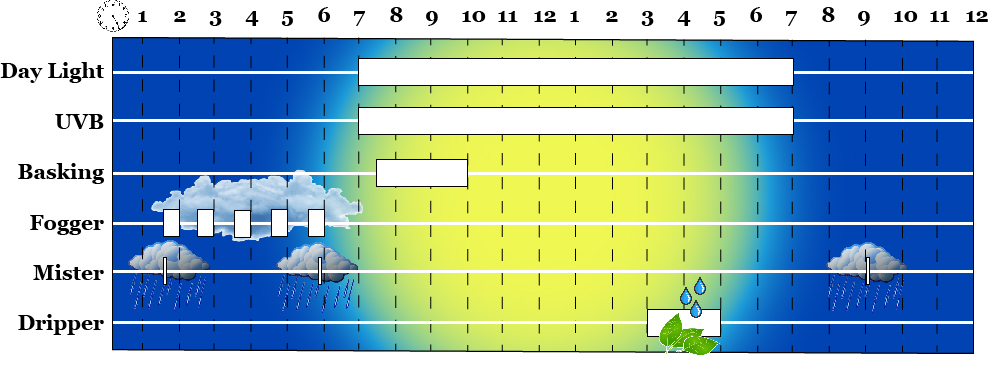ChamLover04
Member
I need an advice on misting frequency and duration. Now I’m misting before school at about 7:15, right after school at 15:00 and at 18:00. The misting usually lasts for about 5 minutes, because I just like to see him drink water because I’m honestly still insecure as he is my first chameleon. The problem is I still haven’t gotten creative with making drainage holes and putting a plastic container underneath the cage and I might be overmisting because water accumulates fast. I just did a major clean up of the cage. The schefflera plant is pretty much done because it got watered too much, but the pothos is still holding up good. The cham’s poop seems normal, he looks hydrated and all, but just wondering if I should switch up my schedule and mist for let’s say 3-4 minutes at 7:00 and 18:00 and just put a dripper on at 15:00. Should that be enough? He’s a panther chameleon so I know he likes higher humidity than veileds. It’s about 35-40% before misting, goes to like 55-60% after misting and I turn on the fogger when his lights are off.


